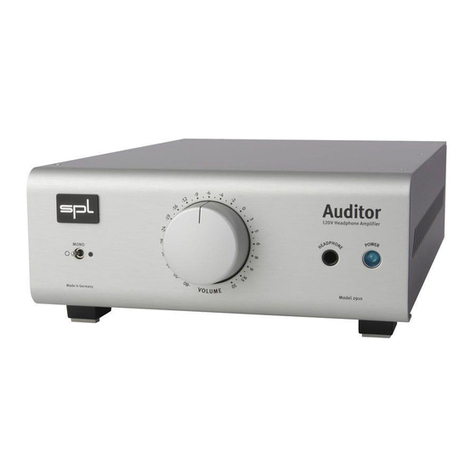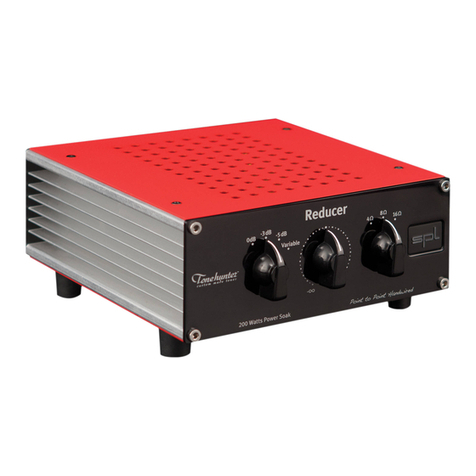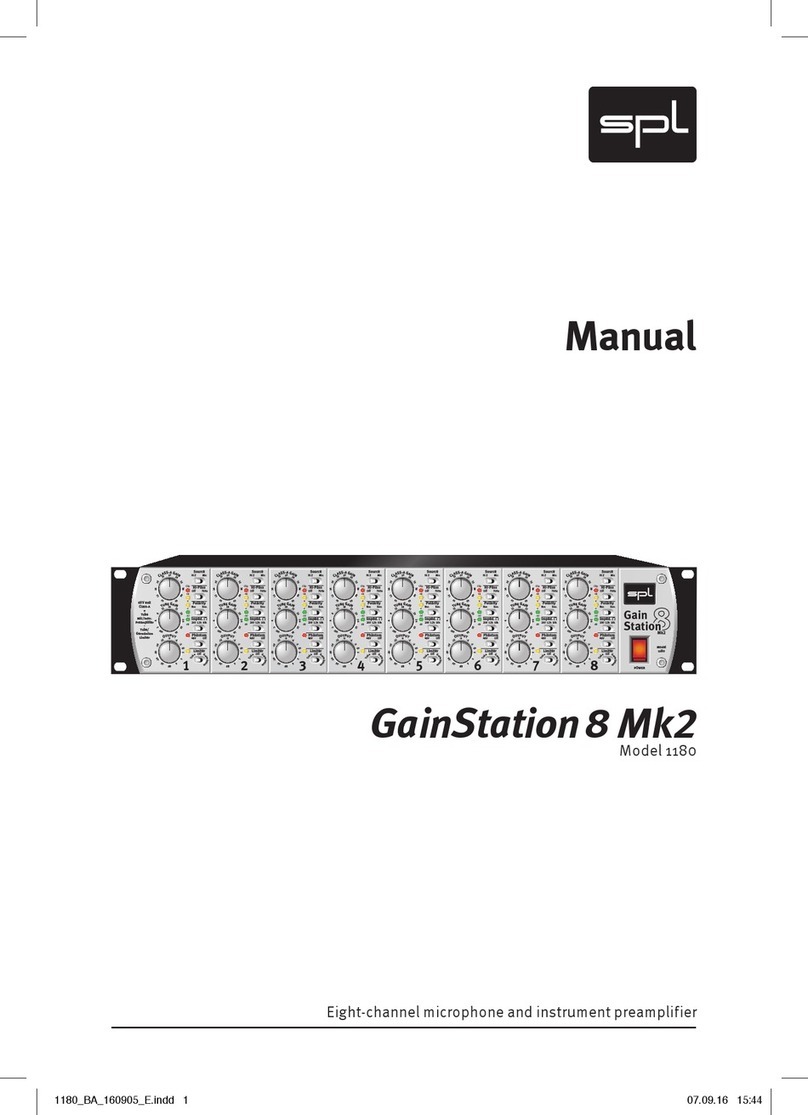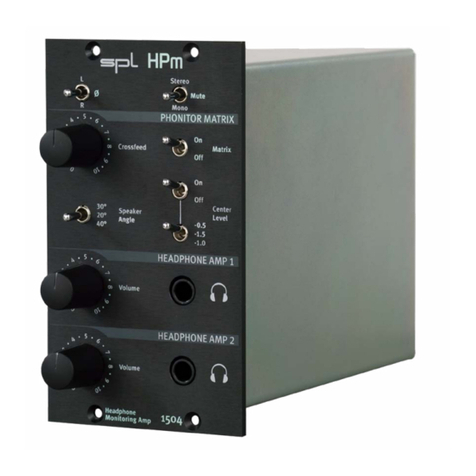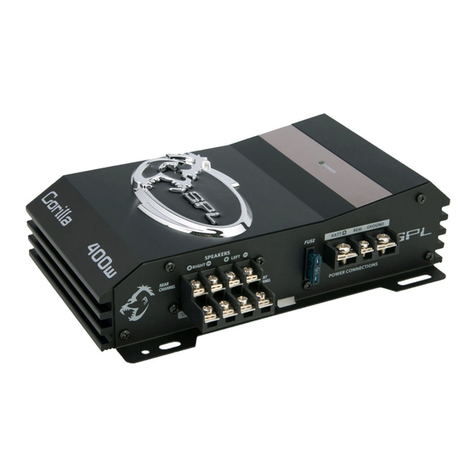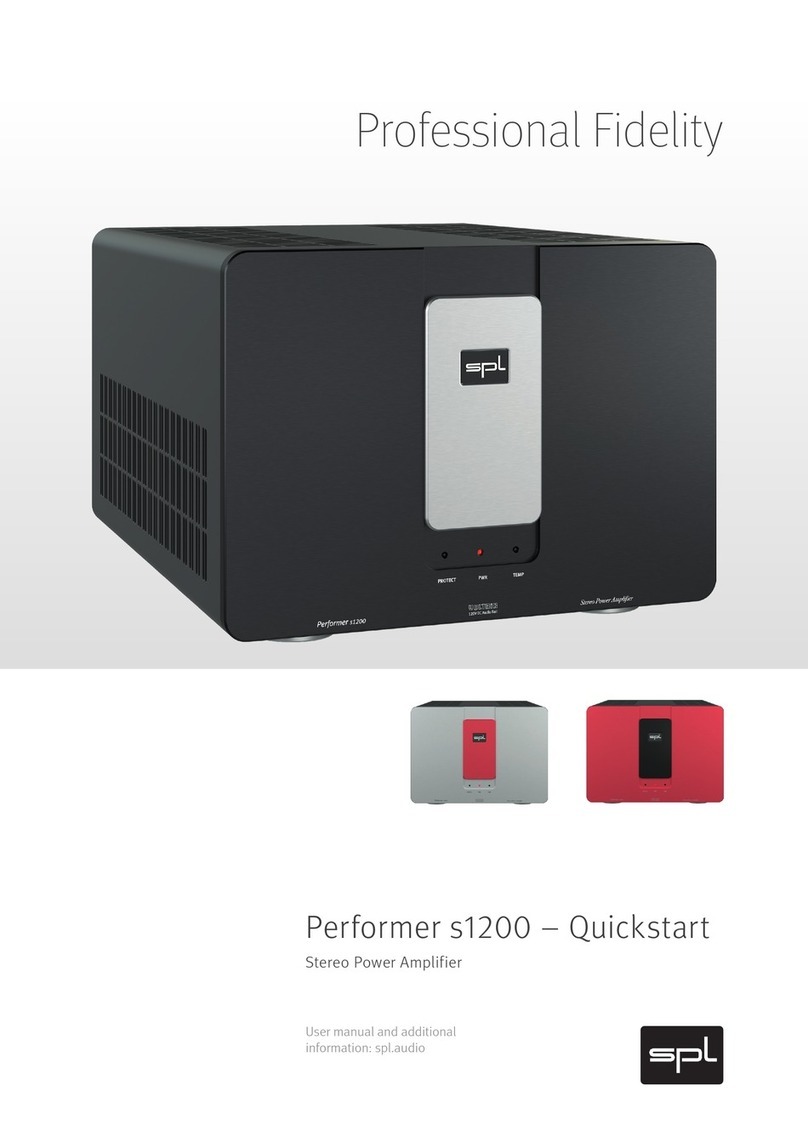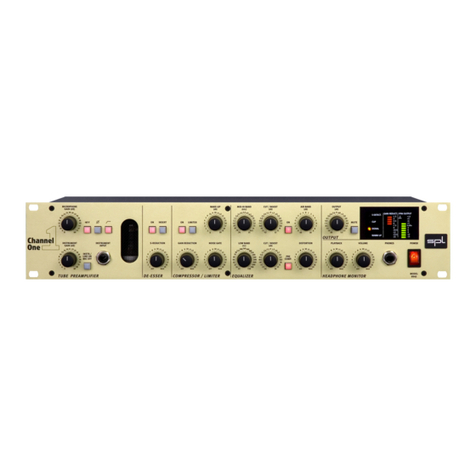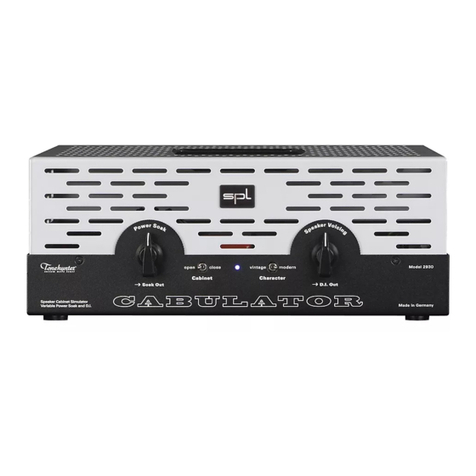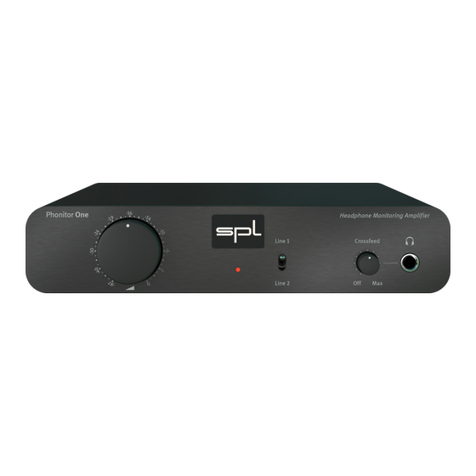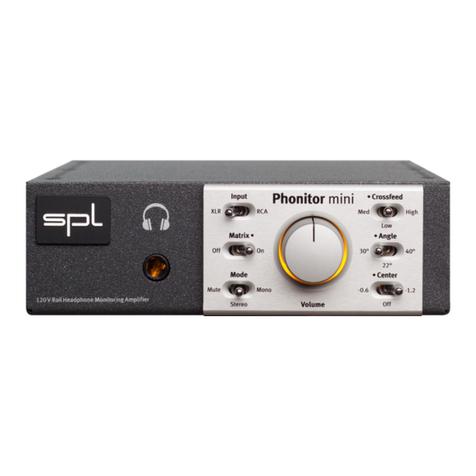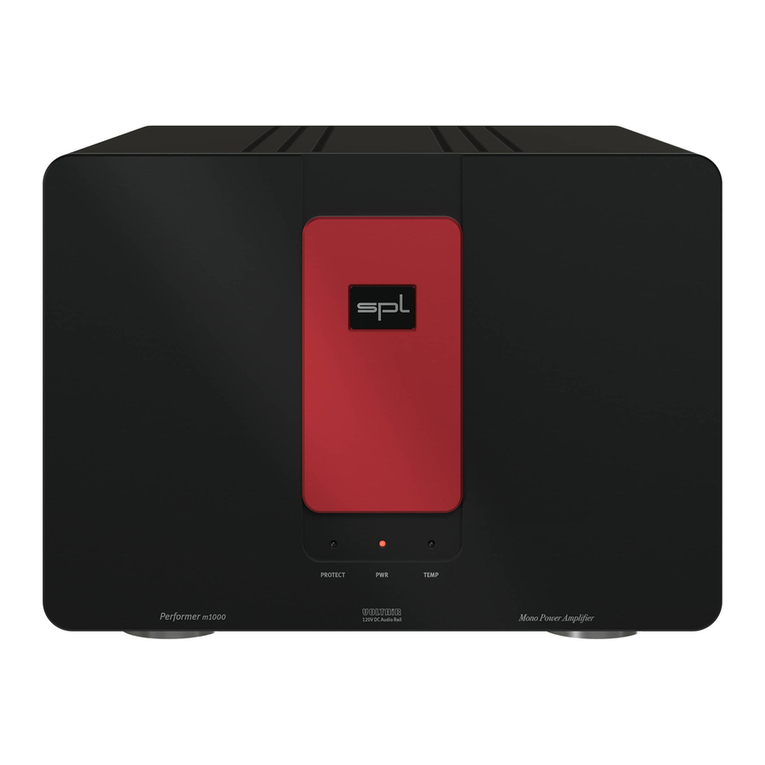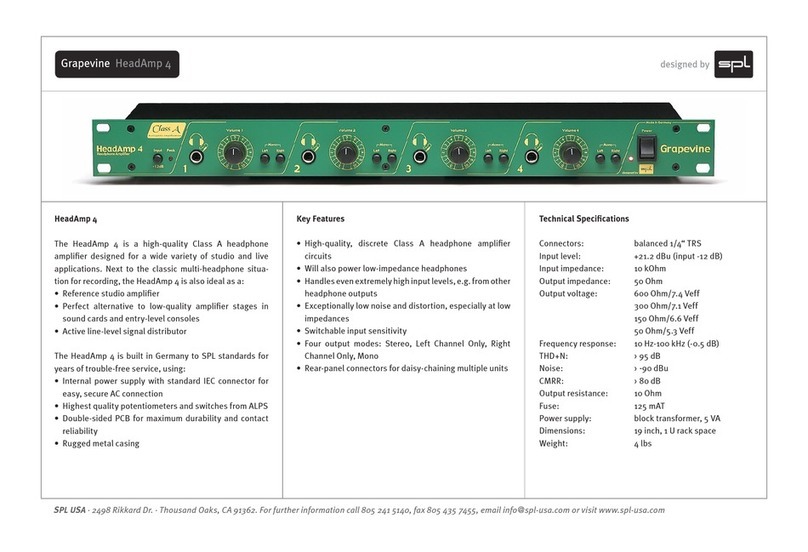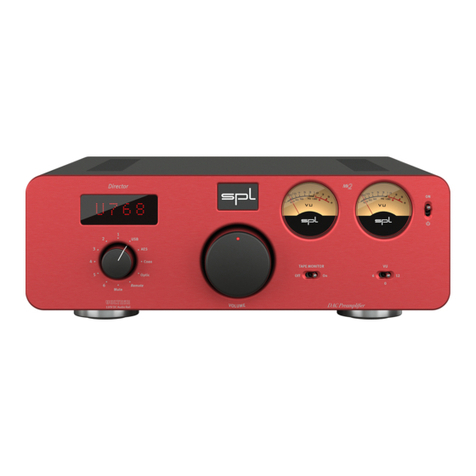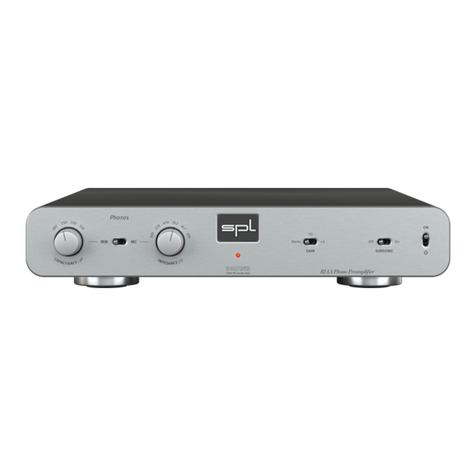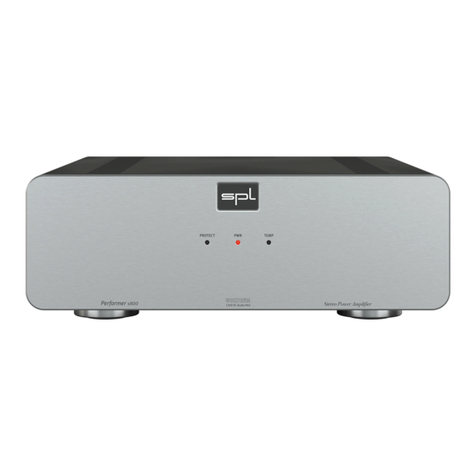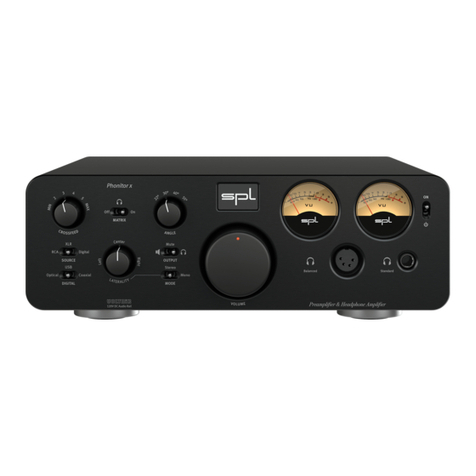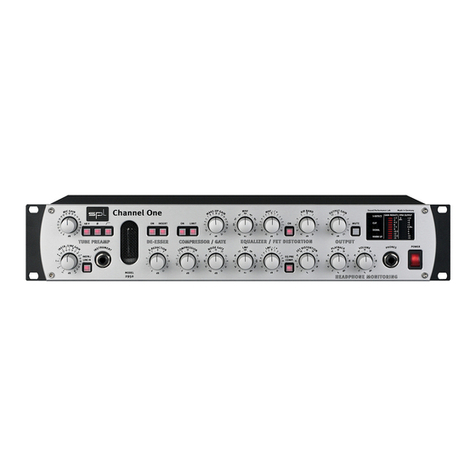
Track One Mk3 – Manual
10
Reference: 0 dBu = 0.775V. All specications are subject to change without notice.
Internal Linear Power Supply with Shielded Toroidal Transformer
Operating voltage for analog audio +/- 15 V
Phantom power 48 V
Mains Power Supply
Mains voltage (selectable) 230 V AC / 50; 115 V AC / 60 Hz
Fuse for 230 V T 312 mA
Fuse for 115 V T 630 mA
Power consumption max. 7.6 VA
Analog inputs & output; XLR & TRS Jack (all balanced, except INSTR./LINE IN: unbalanced)
Maximum input gain (Mic, +8 dB – +63 dB) 10.6 dBu (bei +8 dB GAIN)
Maximaler Eingangs (Line, -12 dB – +22 dB) 33.5 dBu (bei +8 dB GAIN)
Maximaler Eingangs (Instrument, 0 dB – +35 dB) 21.5 dBu (bei +8 dB GAIN)
Input impedance (Instrument) 10 kΩ
Input impedance (Line) 47 kΩ
Input impedance (Instrument) 1.1 MΩ
Frequency range (Mic) 10 Hz – 195 kHz
Noise (A-weighted, Mic Preamp, 150 Ω, 30 dB Gain) -94.5 dBu
Noise (A-weighted, Mic Preamp, 150 Ω, 50 dB Gain) -79 dBu
Nois ((A-weighted, Mic Preamp, 150 Ω, 64 dB Gain) -65 dBu
Noise (A-weighted, Line/Instr Preamp, 0 dB Gain) -97 dBu
Ra usc(A-weighted, Line/Instr Preamp, 10 dB Gain) -90.5 dBu
Rau sc(A-weighted, Line/Instr Preamp, 22 dB Gain) -79 dBu
Equivalent Input Noise (EIN) -126.8 dBu
Common mode rejection (1 kHz) < 80 dB
THD+N Ratio (1 kHz), Mic 30 dB Gain 0.004 %
THD+N Ratio (1 kHz), Mic 50 dB Gain 0.014 %
THD+N Ratio (1 kHz), Mic 64 dB Gain (Max.) 0.029 %
THD+N Ratio (1 kHz), Line 0 dB Gain 0.0021 %
THD+N Ratio (1 kHz), Line 10 dB Gain 0.0016 %
THD+N Ratio (1 kHz), Line 22 dB Gain 0.0045 %
THD+N Ratio (1 kHz), Instrument 0 dB Gain 0.0061 %
THD+N Ratio (1 kHz), (100 kΩ source impedance)
Specications
